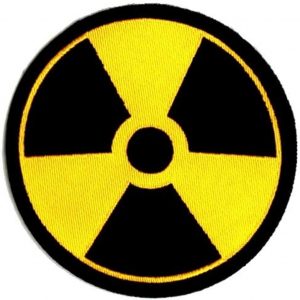Sickle cell disease is a genetic disorder.
It was discovered in Chicago, USA, on 15 November, 1910, by Dr James Bryan Herrick.
He observed that the blood smear of 20-year-old dental student from the Caribbean Island of Grenada, Walter Clement Noel, had red blood cells that were elongated and sickle-shaped.
It was not until 1949 that E. A. Beet and J. V. Neel discovered that the disease is genetically transmitted.
There are four main types: Sickle Cell Anaemia HbSS, Sickle Cell Haemoglobin HbSC, Sickle Beta-Plus Thalassemia HbS beta+, and Sickle Cell Zero Thalassemia HbS beta0.
There are other rarer forms: HbSD, HbSE and HbSO.
HbS beta0 is sometimes devastating, but of all these, Sickle Cell Anaemia is the most devastating and prevalent.
In persons with Sickle Cell Anaemia the haemoglobin, which is an iron compound that carries oxygen in the red blood cells during respiration, is affected.
This is suspected to be caused by a mutation in the responsible gene, Beta Globin gene.
The amino acid Valine is substituted for Glutamic Acid in the protein supporting the haemoglobin.
A gene, which is made up of DNA, codes one amino acid, and amino acids are the building blocks of protein.
As a result, while a red blood cell with normal haemoglobin is round, the one with sickle haemoglobin is crescent or sickle-shaped from where it got its name.
The effect is devastating – the sickle red blood cells tangle and block blood vessels leading to organ failure, stroke, ulcers from wounds that fail to heal, crisis, massive haemolysis, jaundice and severe pain.
Insufficient oxygen is delivered to the body tissues and the patients are liable to die young.
There is no cure. Before now, doctors could only treat the symptoms.
Recently, patients 12 years or older, in severe cases, are made to undergo a bone marrow transplant. The red blood cells are produced in the bone marrow in adults.
The patients first go through Myeloablative Conditioning whereby the bone marrow is removed by chemotherapy in a sterile hospital environment before being replaced.
Getting a matching donor is a big challenge, and this is important so that the bone marrow transplant is not rejected. Only about 18% of volunteers, including siblings, parents, match the patients.
Exagamglogene Autotemcel (exa-cel) or Casgevy uses stem cells from the patient, so there is no problem of tissue rejection.
Well-tested CRISPR technology is used to transfer the gene-edited stem cells in a laboratory. It uses Electroporation, which is simply using mild electric current to pass the modified DNA through the cell membrane.
The genetically engineered cells are then used to replace the bone marrow with the abnormal gene coding Valine for the normal one coding Glutamic Acid.
Put in another way, the stem cells, now edited, are infused back to replace the bone marrow in the same patient.
Closely related to the gene editing technique is gene addition whereby a vector is used to deliver the modified DNA through the cell membrane, instead of an electric current.
In both cases, the patient’s DNA is modified to provide new instructions to produce normal haemoglobin in the patient.
In the gene editing technique, an efficacy rate of 96.6% was achieved in the trial stage for patients 12 years or older who do not have stem cells donor.
The NHS approved it for use in England on 31 January, 2025. The US Food and Drug Administration, FDA, approved Casgevy gene therapy on December 8, 2023.
It is involving and costs up to £1.65 million a patient in England, so only about 50 procedures can be done in a year there. In US, it costs $2.2 million per patient.
The NHS says there are 17,000 sickle cell patients in England by January, 2025. The US has 100,000 Sickle Cell Anaemia patients.
The WHO puts the global number of sickle cell patients at eight million. It is estimated that up to four million sickle cell patients are in Nigeria. Records show that 150,000 babies are born with the disease yearly in Nigeria..
The disorder is prevalent in Africa and among African Americans and descendants of black people in the Caribbean.
It takes both parents to pass the abnormal gene, so the offspring must be homozygous, double recessive, to manifest the disease.
The normal gene is dominant, while the abnormal gene is recessive.
People who inherited only one abnormal haemoglobin gene from one parent (with a normal gene from the other parent), and are heterozygous, do not have the disease, but are carriers.
It is suspected that they are mildly resistant to malaria. These people, as carriers, survived more in malaria-infested Africa and that is why the disorder is prevalent among black people.
These carriers subsist on the normal red blood cells, while the red blood cells with the abnormal gene tend to die out faster, and do not support the maturity of malaria parasites.
Normal red blood cells live for about 120 days, against 20 days for sickle red blood cells. The body of a carrier tries to keep malaria below the threshold level.
Genotype testing (AA for normal homozygous haemoglobin, AS for heterozygous healthy carrier, SS for homozygous sickler) is now compulsory in Nigeria and many African countries, like testing for HIV/AIDS, before marriage.
This is not to match-make or match-break, but to alert the intending couples of the significance of what they are going into.
The ultimate choice is theirs.
There is great excitement with Sickle Cell Anaemia patients about Casgevy because it offers a cure and does not require a donor.
The many side effects like nausea, headaches, and long recovery time, still remain a little additional price to pay for the technology.
photo credit: punch











